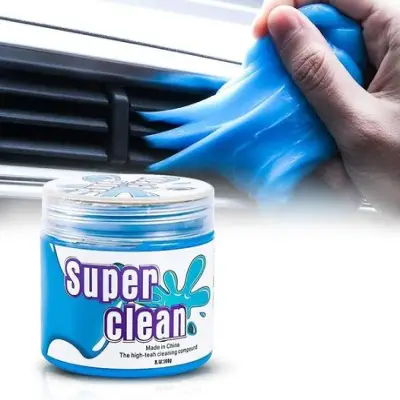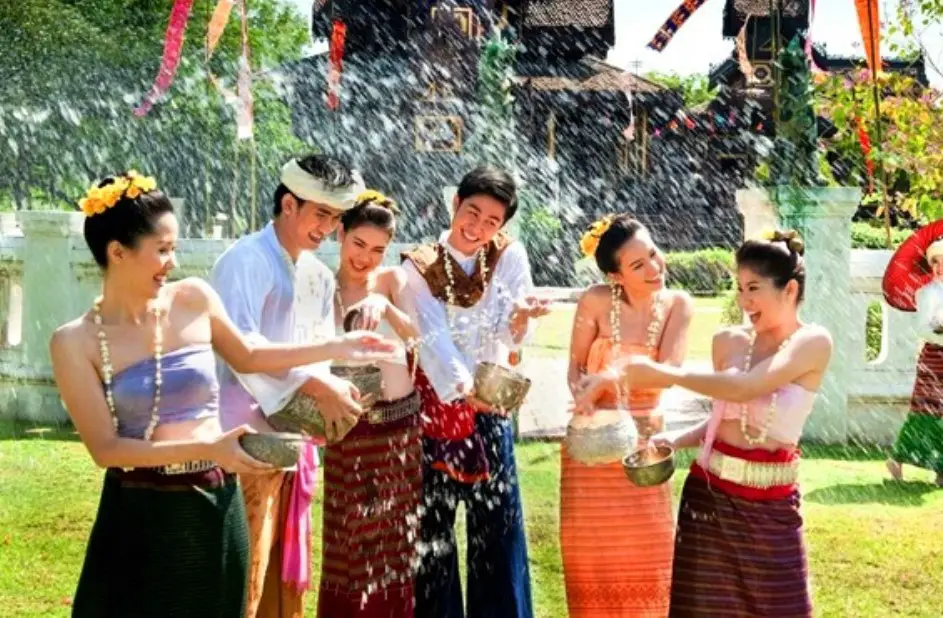Songkran Festival or Thai New Year
Songkran is the Thai New Year's national holiday. Songkran is on 13 April every year, but the holiday period extends from 14 to 15 April. The word "Songkran" comes from the Sanskrit word saṃkrānti, literally "astrological passage", meaning transformation or change. It coincides with the rising of Aries on the astrological chart and with the New Year of many calendars of Southeast and South Asia, in keeping with the Buddhist and Hindu Calendar. The New Year takes place at virtually the same time as the new year celebrations of many countries in South Asia like Bangladesh, China (Dai People of Yunnan Province), India (Baisakhi in Punjab, Bengal Gajan Utsav, Bengal Charak Utsav, Bengali New Year (Poyla Baisakh/Nababarsha) in West Bengal and Tripura, Bihu in Assam,Gudipadva in Maharashtra, Pana or Mahabisuba Sankranti in Odisha, Tamil Puthaandu (Tamil New Year) in Tamil Naadu, Ugadi in Andhra Pradesh and Karnataka, Vishu in Kerala etc.), Laos, Myanmar, Nepal, and Sri Lanka.
In Thailand, New Year is now officially celebrated 1 January. Songkran was the official New Year until 1888, when it was switched to a fixed date of 1 April. Then in 1940, this date was shifted to 1 January. The traditional Thai New Year Songkran was transformed into a national holiday. Celebrations are famous for the public water fights framed as ritual cleansing.
Meaning
Songkran is a term derived from Sanskrit संक्रान्ति saṅkrānti meaning 'to move' or 'movement'. It derives from the movement of the sun from one position to another in the zodiac. According to its literal meaning in Sanskrit, a Songkran occurs every month. However, the period that Thai people refer to as Songkran happens when the sun moves from Pisces to Aries in the zodiac. The correct name for this period should actually be Maha Songkran ('great Songkran) because it coincides with the arrival of a New Year. The Songkran festival is, therefore, a celebration of the New Year in accordance with the solar calendar. The celebration covers a period of three days: 13 April is regarded as Maha Songkran, the day that the sun moves into Aries on the zodiac or the last day of the old year. The next day, 14 April is called Wan Nao, the transitional day between the old and the new years, and 15 April is called Wan Thaloeng Sok (Thai: วันเถลิงศก 'to begin a new era or year'), New Year's day itself.
Origin
According to the Buddhist scripture of Wat Pho, Songkran originated from the death of Kapila Brahma. In the olden days, there was a wealthy man and his neighbor, a drunkard. The drunkard, who had two sons, belittled the rich man for being childless. The rich man was humiliated and beseeched the Sun and the Moon gods to grant him a son. His attempts failed until he offered cooked rice to the tree god living in a banyan tree, who asked Indra to grant the man's wish. The child, named Thammabal was born.
Thammabal was a clever child who learned three vedas, bird language and also taught people to avoid sin. Kapila Brahma learned of the child and wanted to test the child's cleverness. The god asked, "Where is the glory of men (sri) located in the morning, during the day, and in the evening?" The loser would have his head chopped off. The boy thought in vain for six days, but could not find a solution to the riddles. He lay beneath a sugar palm tree and overheard a conversation between a pair of eagles who planned to eat his corpse when he lost the bet. The female eagle asked her mate whether he knew the answer. He answered, "In the morning, the sri appears on the face, so people wash their faces every morning. At noon, the sri is at the chest where people spray perfume every noon. In the evening, the sri goes to the feet, so people wash their feet every evening." Thmmabal memorized the answer and gave it to Kapila Brahma the next day. Having lost, Kapila Brahma summoned his seven daughters and told them that he must cut his head off. However, if his head fell to earth, it would create an inferno that would engulf the world. If his head was thrown into the air, the rains would stop. And if his head was dropped into the ocean, all seawater would dry up. To prevent these calamities, he told his daughters to place his head on an elevated phan. Thungsa, his eldest child, stored her father's head in the cave in Mount Kailash.
Every year when the Sun enters Aries, one of Kapila Brahma's children, called the Nang Songkran for that year, and other angels form a procession. One of them takes the phan with Kapila Brahma's head. The lady stands, sits, reclines or sleeps on the back of the animal depending on the time. From the dawn to midday, the lady will stand on the back of her conveyance. After midday until the sunset, she will sit down. Between the sunset and midnight, the lady lies down on her vehicle but leaves her eyes open. After midnight, she sleeps. These postures and other details were previously drawn as part of the Prakat Songkran and now as part of the lunisolar calendar. The procession lasts for 60 minutes around Mount Meru. This is subsequently called Maha Songkran to distinguish from other Songkran that occur when the Sun moves from one to another zodiac. For simplicity, the name was later shortened as Songkran.







